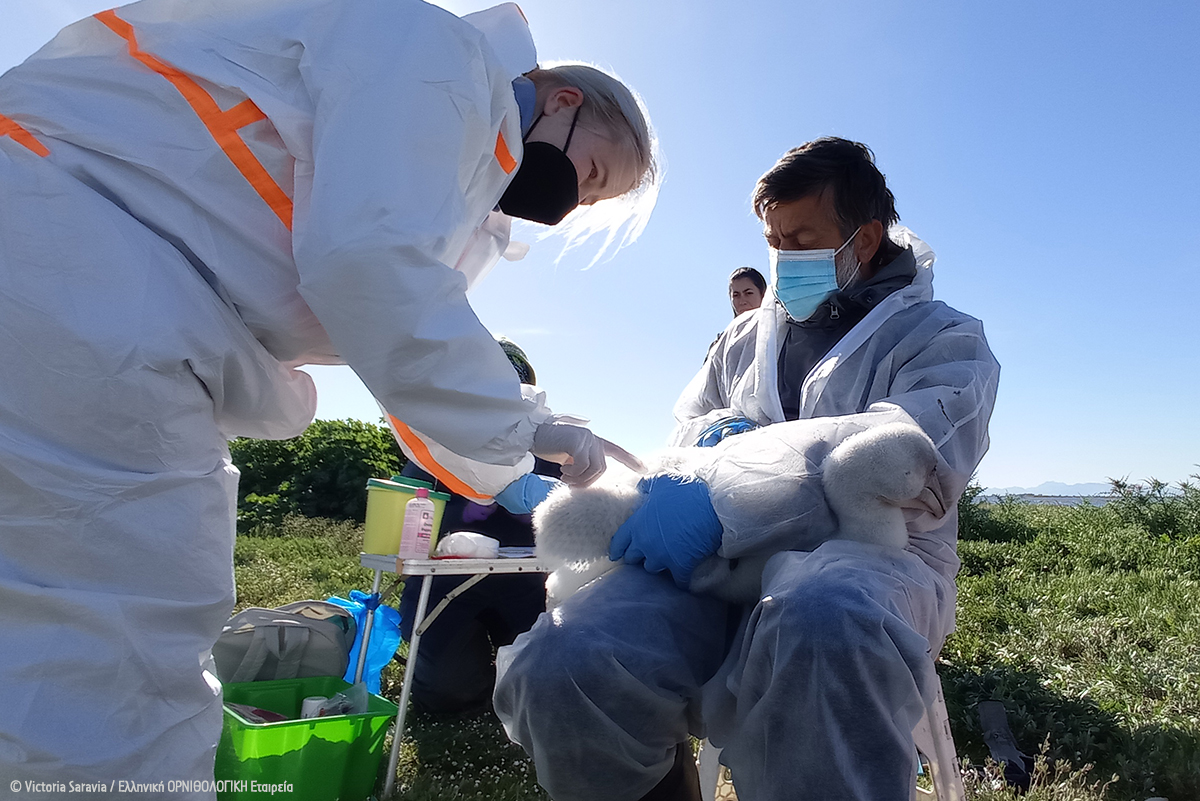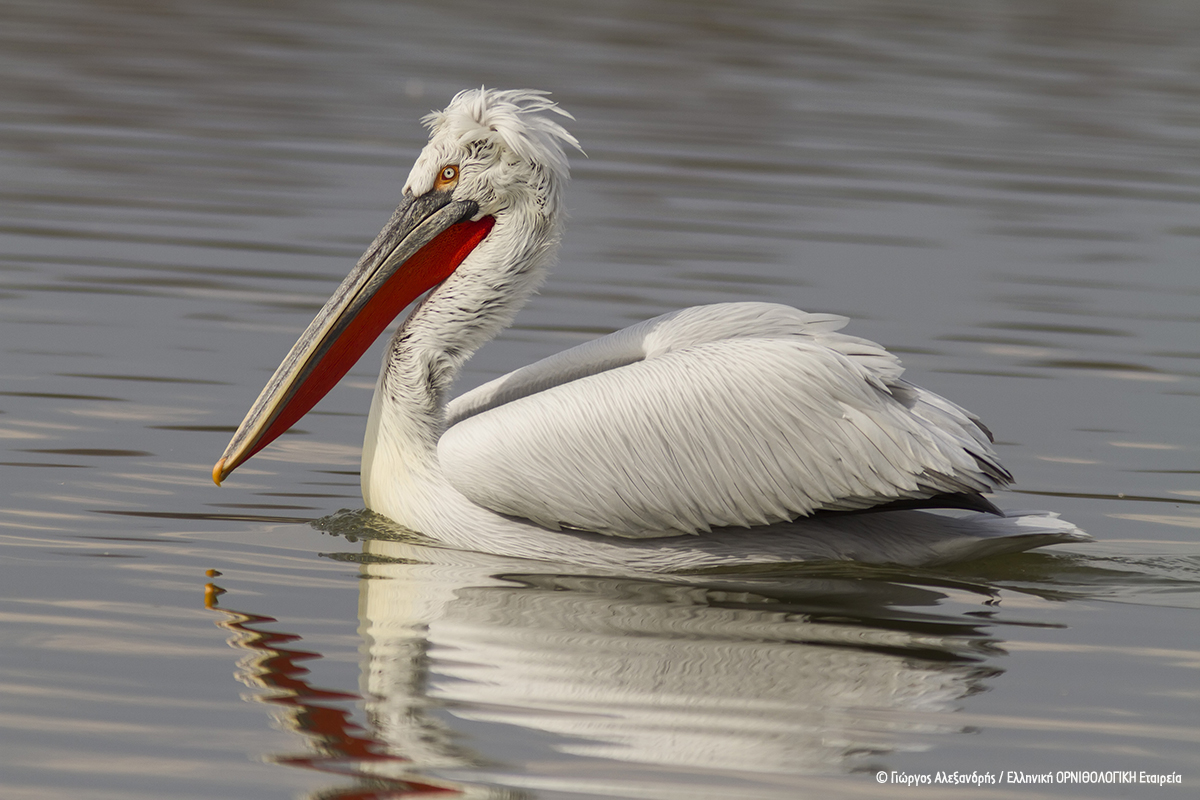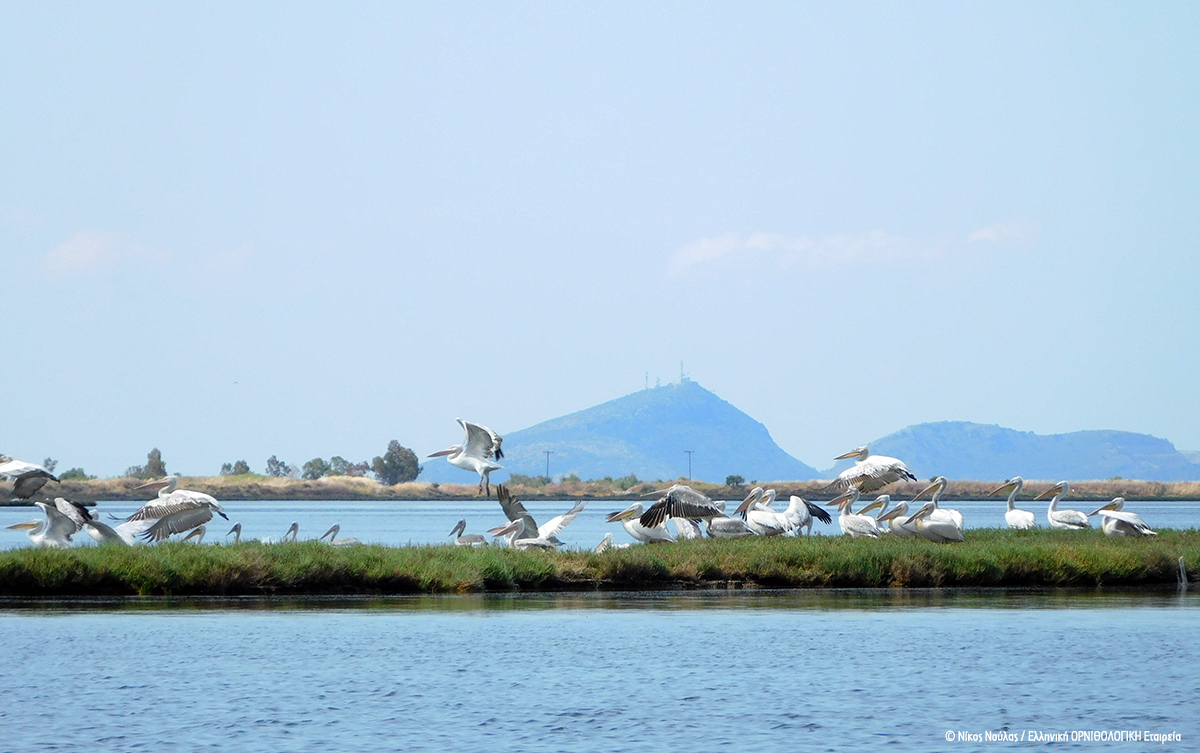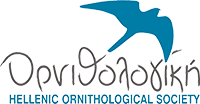41 pelicans ringed and 8 chicks tagged with satellite transmitter the results of the HOS mission in Messolonghi and Amvrakikos Gulf
In the last few weeks, the team of the Hellenic Ornithological Society / BirdLife Greece visited Messolonghi and Amvrakikos Gulf in order to coordinate tagging and monitoring activities of Dalmatian pelican chicks in the two important breeding colonies of the species.
In the framework of the first mission, a total of 41 Dalmatian pelican chicks were ringed with colour rings. Of these, 29 were ringed in the Messolonghi - Aetoliko Lagoon National Park (Kleisova and Central Lagoon) and the remaining 12 in the Amvrakikos Gulf (Lougaros and Tsoukalos lagoons). Additionally, five ready to fly chicks were tagged with satellite transmitters in Messolonghi.
Both actions were implemented in cooperation with the Society for the Protection of Prespa and with the support of the Management Unit of the Messolonghi National Park & Western Sterea National Park and the Amvrakikos Gulf Management Unit. An important contribution to the action was also made by the Green Balkans with the provision of bird handling equipment.


One week later, the HOS team went again to the National Park of Messolonghi Lagoon for another tagging mission, in the framework of which three more satellite transmitters were placed on young Dalmatian pelicans in the area of Kleisova.
“All Dalmatian pelicans are now wearing two plastic yellow rings with unique codes that help the monitoring of the species, while the data from the satellite transmitters will provide us with valuable information on the birds’ movements, the main threats they face at each stage of their lives and the range of areas they feed in,” tells Victoria Saravia from HOS. “It is also positive that no waterfowl deaths were observed in the area, that we can categorize as avian influenza cases. Last year the Dalmatian pelican population saw a 40% decline in the country due to the outbreak of this disease.”
The Dalmatian pelican, one of the two species of pelican found in Greece, forms the largest colony in the world in Lake Mikri Prespa, while colonies of the species are also found in Lake Kerkini, Lake Karla, Lake Chimaditida, Amvrakikos Gulf and Messolonghi Lagoon among others.
In Messolonghi, nesting of the species was confirmed for the first time in 2011, with colonies of the species located within the Kleisova lagoon, but also on an islet within the central lagoon.


The Dalmatian pelican was until recently a globally endangered species. However, thanks to the conservation measures, which have led to a gradual increase in its population, it is no longer in the Endangered category, while an International Action Plan for the species was recently drawn up.
HOS team also calls to the residents and visitors of the area of the Messolonghi Lagoon and the Amvrakiko Wetlands to help collecting the information about the species.
In case you observe a ringed Dalmatian pelican, please inform the Hellenic Ornithological Society, sending the location where the bird was observed, as well as relevant photos:
- By e-mail at This email address is being protected from spambots. You need JavaScript enabled to view it.
- By message on the page of HOS on Facebook: www.facebook.com/BirdlifeGreece
- Tel. contact: +30 210 8228704 & 210 8227937

The LIFE Project «Pelican Way of LIFE» (LIFE18 NAT/NL/000716) brings together seven partners from five countries who aim to implement conservation actions for the Dalmatian Pelican (Pelecanus crispus) in Europe and internationally. The Project will run for five years (09/2019 to 03/2025) and will be implemented in 27 Natura 2000 sites in Romania, Bulgaria, Greece and Ukraine, while supporting actions in Turkey, Albania, Montenegro and the Republic of North Macedonia. The project is coordinated by Rewilding Europe and in Greece the Project’s actions are implemented by HOS/BirdLife Greece.



